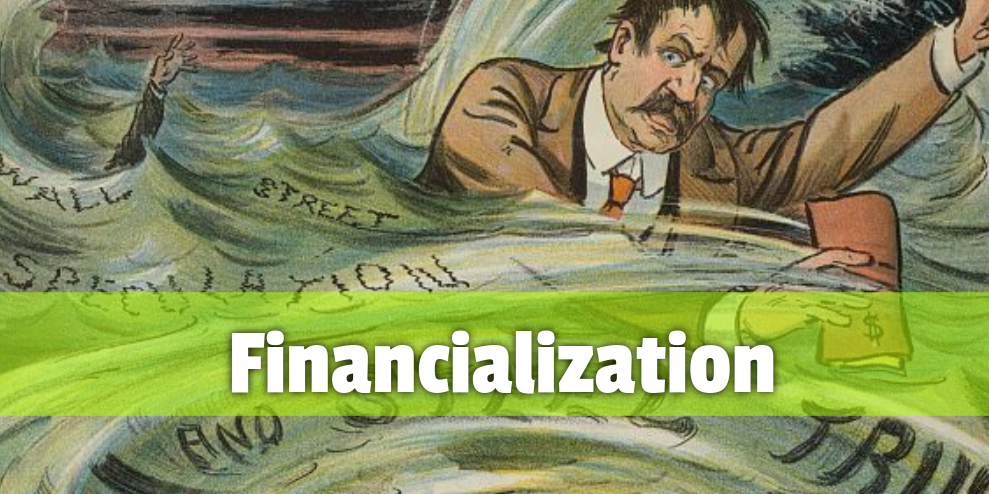Financialization

Cyclical metastasis of fictitious capital that multiplies the capitalist chaos in the allocation of productive resources, exponentially scaling up the "financial bubbles" and precedes the bursting of the "financial crashes".
Beyond certain volumes, the development of fictitious capital is not limited to the stock markets and the "classic" speculative futures markets for raw materials. From a given time onwards, over-accumulated capital, without sufficient profitable productive destinations, begins to bet on its own results. This movement does not take place in the form of classic insurance mechanisms but as part of the creation of "bundles" of assets that compensate for the original high speculative risks with investments of lower risk that have had a relatively stable statistical behavior.
However, by betting on its own result, under the appearance of a homogenization and reduction of risks, liabilities (debts) are being converted into assets (shares in funds dedicated to betting). The apparent reduction in risk mobilizes huge masses of capital, increasing the average expected return on assets in the process. The bubble starts. The direct consequences form a distinct phenomenon called financialization:
-
The contrast between speculative yields and the profitability of productive companies (which exploit labor) transforms the latter internally. The objective is to make money as soon as possible in order to gain funds with which to invest. Airlines, travel agencies, bookstores, supermarket chains, and so on will be the first to charge in advance and delay payments to suppliers to maximize the time with which to speculate with their own liquidity. From a certain point on, it will become profitable for these companies to sell at prices below their cost of production in order to increase the volume of sales and therefore the cash volume with which to speculate.
Simply because the expected speculative margins are higher than the operating margins, the most "rational" thing from the point of view of the individual company's profit is to increase the mass of cash available for as long as possible even if it generates an operating loss in the main business. This means, for example, reducing shelf times for a supermarket by selling for less than it costs to manufacture a can of food, or for a travel agent to sell a holiday for less than the cost of jet fuel if bought more than four months in advance.
The problem is that the price structure is corrupted and with it distorts competition on the capital market and the distribution of capital resources between companies. The capitalist chaos is multiplied in the distribution of resources and with it the inefficiencies and weaknesses of the whole system.
- Once the amount of capital bet on the results of the capital actually used in exploitation exceeds it by several times, risk multiplies as the material basis of the system becomes smaller and smaller in relation to the stakes on its outcome. Meanwhile, incentives lead investors to take more and more risk even though their rates may not necessarily reflect it. In fact, the main risk is that from a certain point onwards, the least risky option is to bet on a general collapse. These are the moments before a generalized financial crash.